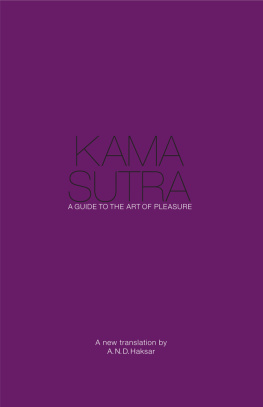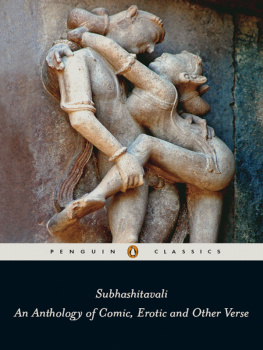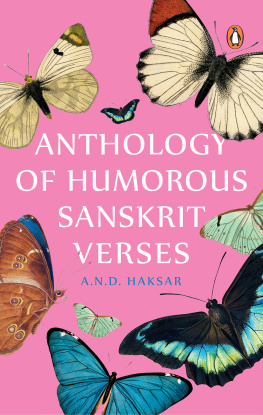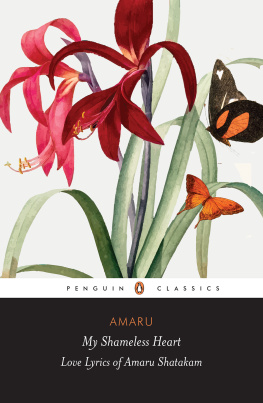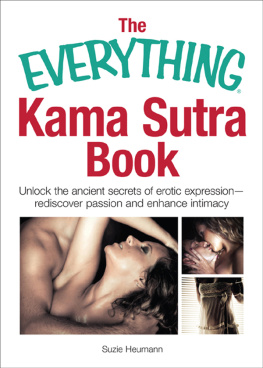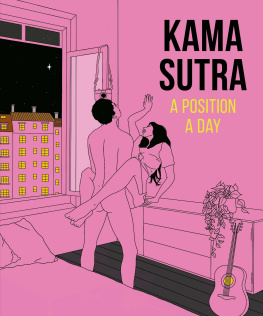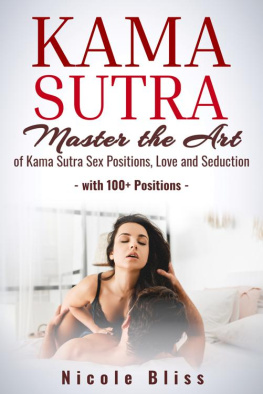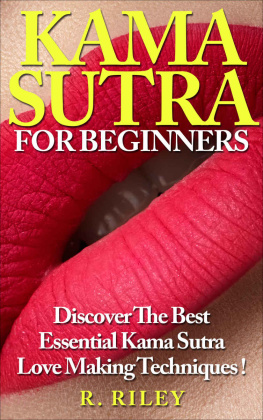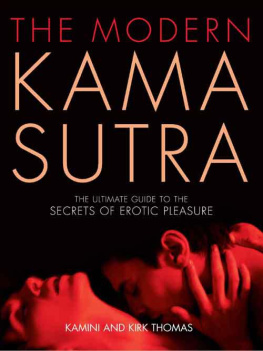Kama Sutra
A Guide to the Art of Pleasure
by
VATSYAYANA
a new translation by
A. N. D. HAKSAR
PENGUIN CLASSICS
an imprint of
PENGUIN BOOKS
PENGUIN CLASSICS
Published by the Penguin Group
Penguin Books Ltd, 80 Strand, London WC2R 0RL , England
Penguin Group (USA), Inc., 375 Hudson Street, New York, New York 10014, USA
Penguin Group (Canada), 90 Eglinton Avenue East, Suite 700, Toronto, Ontario, Canada M4P 2Y3
(a division of Pearson Penguin Canada Inc.)
Penguin Ireland, 25 St Stephens Green, Dublin 2, Ireland (a division of Penguin Books Ltd)
Penguin Group (Australia), 250 Camberwell Road, Camberwell, Victoria 3124, Australia
(a division of Pearson Australia Group Pty Ltd)
Penguin Books India Pvt Ltd, 11 Community Centre, Panchsheel Park, New Delhi 110 017, India
Penguin Group (NZ), 67 Apollo Drive, Rosedale, North Shore 0632, New Zealand
(a division of Pearson New Zealand Ltd)
Penguin Books (South Africa) (Pty) Ltd, 24 Sturdee Avenue, Rosebank, Johannesburg 2196, South Africa
Penguin Books Ltd, Registered Offices: 80 Strand, London WC2R 0RL , England
www.penguin.com
First published in Penguin Classics 2011
Translation copyright A. N. D. Haksar
All rights reserved
The moral right of the translator has been asserted
Without limiting the rights under copyright reserved above, no part of this publication may be reproduced, stored in or introduced into a retrieval system, or transmitted, in any form or by any means (electronic, mechanical, photocopying, recording or otherwise), without the prior written permission of both the copyright owner and the above publisher of this book
ISBN: 978-0-14-196838-4
P. M. S.
For
B.
with love
Introduction
The Kama Sutra was written in India nearly two thousand years ago. It is barely more than a hundred years since it became known outside the country of its origin. Interest in it seems ageless. In India it has been cited century after century in other works, as well as influencing literature and art. In the wider world its celebrity, or notoriety, remains unaffected by the information explosion on its principal subject in our times.
Present Perceptions
The title has 183 listings in the online catalogue of the US Library of Congress. These include several books with the original text and commentary in Sanskrit, the literary language of ancient India. Much more numerous are translations into English and other languages such as French, German, Italian and Russian, not to mention those of South Asia like Bengali, Hindi, Marathi and Telugu. There are also some scholarly studies of Indian history, literature and social life bearing on the work.
But more than half the titles in the Congressional list point to perspectives other than the academic. They range from Complete Illustrated Kama Sutra to Pocket Idiots Guide to the Kama Sutra, and from Kitchen Kama Sutra: 50 ways to seduce each other outside the bedroom to Pop-up Kama Sutra: 6 paper-engineered variations. The last entry is Kama Sutra 52: A years worth of best positions for passion and pleasure published in 2009.
The work seems to have two popular reputations in the West, according to a recent commentator from the United Kingdom. One as an exotic compendium of positions for human copulation and the other as a repository of Oriental erotic wisdom, the Ur-text of a profoundly spiritual tradition. Either way, he says, it has become a byword for sex itself. Also, one may add, a brand name for consumer marketing and advertisement, to go by the establishments and products which use its unpatented title.
This reputation also extends to modern India. Much of its vast population may yet be largely unaware of the work. But among many of its intellectual class the Kama Sutra is still held up as a proud example of that countrys alternative tradition of sexual morality. A popular brand of condoms bears its name, as do many publications with colourful pictures in coffee-table and pocket-size editions. However, these are mostly bought by tourists, thinks an Indian psychoanalyst, scholar and novelist of the subject, and the locals dont read it any more; they only look at illustrations of the sexual positions. What it is really about, he says, is the art of living about finding a partner, maintaining power in marriage, committing adultery, living as or with a courtesan, using drugs and also about positions in sexual intercourse. It has attained its classical status as the worlds first comprehensive guide to erotic love because it is at the bottom about essential, unchangeable human attributes lust, love, shyness,
An Ancient Assessment
The repute of the Kama Sutra and its author in ancient India, and its position in the knowledge system of the time, is perhaps put most simply in another well-known and possibly not much later work. This is the Panchatantra, a popular collection of animal and human fables still in wide circulation. In the prologue of its text a king, anxious to have his children well educated, is told: Majesty, it is heard that grammar takes twelve years. Then come Manu and other works on Dharma, Chanakya and those on Artha, and Vatsyayana and others on Kama. Thus are the sciences of Dharma, Artha and Kama learnt. Then does knowledge develop.
Four things seem clear from these references in a book which was meant for instruction as well as entertainment. First, general education at the time was seen broadly to comprise three main branches of knowledge after reading, writing and grammar. Second, each of these had come to be identified with the work of one particular authority. Third, Kama was one of the three branches and the name associated with it was that of Vatsyayana. Finally, though Kama may have had a wider connotation inclusive of other pursuits, its principal concern was with sex.
The Three Ends
It is fitting first to consider the wider context. It conceptualized a trinity of worldly pursuits or ends of human life, summed up in the words Dharma, Artha and Kama. Each has multiple meanings but, very broadly, Dharma is virtue and righteous conduct, Artha is wealth, power and material well-being and Kama is desire for and sensual pleasure of all kinds. There were areas, such as marriage, where they overlapped. But each was seen as a basic motivator and goal of normal human action as a whole, and worthy as such of study and regulation. A well-rounded education presumed some familiarity with this triad (trivarga) of human objectives (purushartha), each with its due place in life. A fourth end, which made it a quartet (chaturvarga), was Moksha or salvation. But that was an other-worldly pursuit.
The three ends are spelt out briefly and clearly in the Kama Sutras . Their mutual relationship and comparative importance are also discussed, though with some ambivalence. While the pursuit of Dharma obviously took precedence over the other two, its benefits might accrue only in a future life. Artha, on the other hand, could be more important for people like kings and courtesans because of their worldly requirements. Kama was a basic need like food. The comparison was businesslike, but it could also be cynical, as shown by a later Sanskrit poet and author of a now lost commentary on the Kama Sutra:
Talk of Dharma, taste for Kama,
mind for Moksha, come about
only when content and comfort
dawn in bellies taut with hunger:
for, when it is the time to eat,
and no money nor the means,
who thinks of Dharma, relishes Kama,
or looks to that which leads to Moksha?

